Calling Coons by Pete Hauer
Lately, it seems I have been getting more and more e-mails about calling raccoons. This short paper will try to explain the methods I use while calling coons in Maryland and Pennsylvania. Perhaps we need to understand a bit about the general habits of coon before we begin hunting them...
TEMPERATURE AND TIME TO HUNT
Coons are largely nocturnal feeders but they can often be seen foraging during dusk and dawn (secondarily crepuscular). While they adapt to many different environments, they seem to prefer areas close to some type of water source. This could include swamps, streambeds, lakes, beaches, quarries, etc. They are fairly hearty animals in regards to temperature, but when the mercury plummets much below the freezing mark, they often den up for extended periods of time. Oddly, they do not technically hibernate, but will actually sleep with a fairly normal metabolic rate. I think this is important because their caloric demands are greater than an animal that truly hibernates.
Coon will eat heavily in late summer and early fall to put on high fat reserves for the winter. Unlike a true hibernating animal, they are more likely to take advantage of a warmer than usual winter night. I found this to be true when I used to trap them when I was a kid. On bitter cold nights, we would see little sign of movement and yet, if the next night warmed up a bit, we would often see a flurry of activity by these masked bandits. Keep this in mind when hunting them. Yes, you can definitely call in and kill coons that are out in the snow on a winter night.
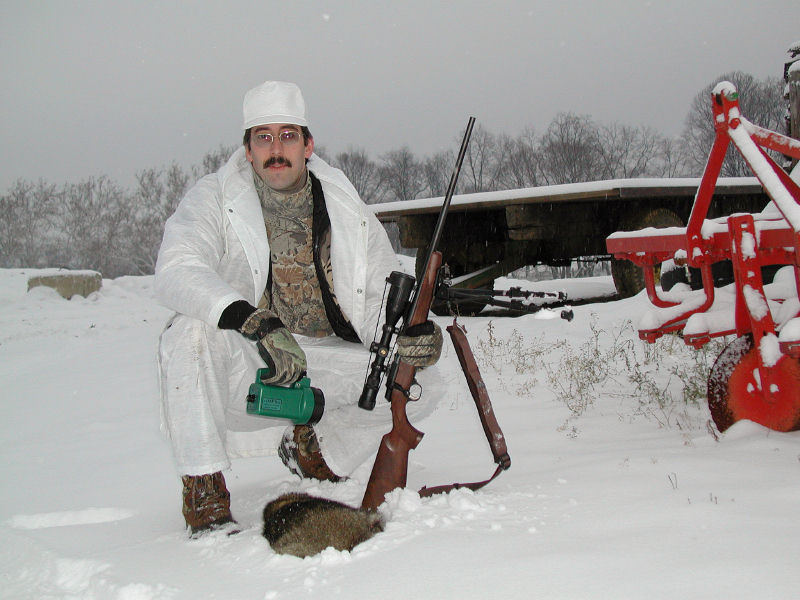
Pete Hauer
I do believe coons in more northern climates handle the cold better than their summer cousins. Certainly a heavy prime Michigan coon will tolerate colder temps than a Florida coon.
DIET AND LOCATIONS TO SCOUT FOR COON SIGN
As true omnivores, coons will eat just about anything. They are quite fond of most fruits and vegetables and also eat a lot of crustaceans and invertebrates. They will also feed on small animals, birds and eggs of nesting birds. Knowing a bit about their diet can help you determine where to scout for coon sign. In my area, they seem to key in on corn, crawfish, wild berries and nuts of all kinds. If you can find these food sources close to a water supply you are on the right track to finding coons. I have had very good luck finding their den trees in thick brush streambeds close to cornfields. If you look along muddy banks of streams or ponds, you will often find their tracks, which reveal 5 toes on both the front and rear feet.
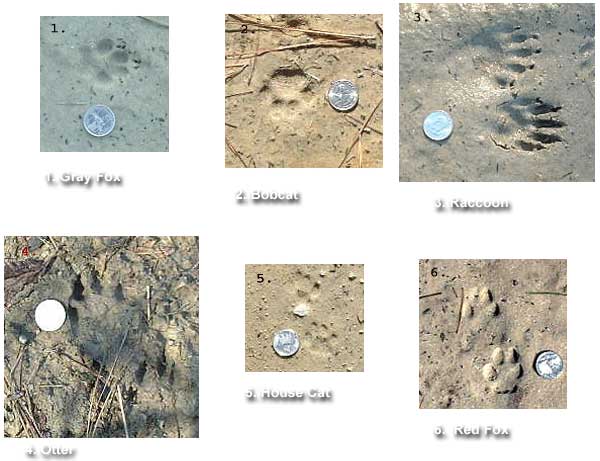
Gray fox, bobcat, raccoon, otter, house cat, and red fox tracks
Have to give Paul Dobbins of Trapperman credit for the track pics. Thanks Paul!
Coons tend to be creatures of habit and will use the same trails over and over, which take them from bedding to feeding areas. Trappers will read sign of tracks and feces to locate coon travel routes. Likewise a predator caller should begin by scouting out his area to find the highest concentrations of sign. When I trapped, I learned to get down on my hands and knees in a thicket where you could more easily spot their tunnels that course through the thick brush. In this area, coon feces are pretty easy to spot and they often like to defecate on logs that cross streams or out in the open areas close to their den trees. Their feces are generally dark in color, usually have a large granular appearance and are often full of seeds.
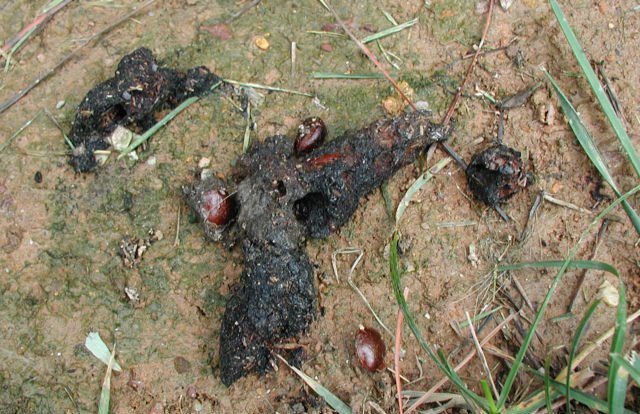
Raccoon feces
As a kid who worked on a farm, we tried to hide patches of sweet corn inside large fields of field corn in an attempt to stop the masked bandits from eating it all. Somehow they always seemed to find that sweet corn. Likewise in late fall, I know of a few persimmon trees that the coons love to raid. Perhaps your best bet is to talk with the landowner regarding coon locations. Anybody who lives and works on the land will know where the coons live and eat.
As winter closes, fields hold less food and streams can freeze up making it tough on the coon. As opportunistic feeders, they can and will feed on anything they can get their hands on. This search often leads them to corncribs, barns with silos, sweet feed in horse and cattle barns, etc. They seem to get into everything in a barn and a bunch of midnight masked bandits can make quite a mess in a feed barn. Many coons will take up residence in barns and will often den inside hay or straw lofts. A spotlight will often find them sleeping on a barn rafter, inside silos, etc.
CALLING ALL COONS!
Now that we have discussed where to find coons, let's talk about calling them with your FOXPRO caller. I usually call most of my coons within the first few hours of darkness. I very rarely call them in during daylight hours unless it is inside a dark barn. I have not called many coons during dawn conditions but occasionally see them while deer hunting. It could be a productive time to call, but I don't have much experience calling during this time. I will note the first few hours of evening darkness tend to be more productive for me than the middle of the night at 3am. Most often, I will set up in a field close to corn, den trees and a streambed. For some reason, corners of fields tend to be my most productive calling areas.
I like to start out calling with a food call that is non-threatening and in the case of coons, I like bird calls as a starting point. In particular, I like FOXPRO'S chicken in distress, woodpecker, blue jay, starling, magpie, partridge, quail, and mallard ducks. If I had to use just one of those it would most definitely be the chicken in distress. I will use this call first because it has the potential to call in large and small coons regardless of whether they are male or female. They just see it as an easy meal and it is relatively non-threatening. I have had them come in both fast and slow to this call and have also had them watch the caller from a den tree.
If I have not had any response from a food call, I will usually switch fairly quickly to FOXPRO'S raccoon puppies. This call will usually bring in adults and both males and females may respond. A female may respond out of maternal instinct and a large boar may think some young coons have gotten into his chicken meal. Regardless of the reason, I have had both respond and they have come both slow and fast.
If there is no response to the Raccoon Puppies call, I switch fairly quickly to the FOXPRO Raccoon Fight call. With this call, I generally only call in larger boars but I understand this varies from area to area within the country. I know some callers in Texas that call in plenty of females with this call. I can only tell you for sure that 95% of the coons I have called with this call were large boars.

Raccoon called in with a FOXPRO game call.
Most of these will show up on the scene fairly quickly so be ready for action. Personally I have the strongest response to this call during coon breeding seasons, which run from about February to May. Most are bred in March in this area and males will often cover more territory then. They also get in more territorial fights during the breeding season.
While using this call, and all others, I will always scan the surrounding trees for raccoons. Often, they will climb trees for a vantage point to observe what they hear. The coons in this area do not like to be in a bright spotlight and will often hide either in the den tree or behind the trunk. A red filter helps but if the light is still bright, they may not stick around long. I have recently started using a Lightforce light, which has a rheostat dimmer that allows me to turn the light intensity down. They seem to tolerate this dimmed light much better than a bright spotlight. I will often quickly scan distant trees on bright and if a coon is spotted, I will close the distance and back off on light intensity. The Lightforce can also be quickly switched from rifle to shotgun to bow with appropriate mounts. The tapeta lucidem of coon eyes reflects very brightly and a low intensity light is all that is needed.
CALLING STYLES VARY
This is by no means the definitive source of calling for coons. Tactics vary greatly by state and hunter. This is simply how I have successfully called many coons with my FOXPRO caller. I have used mouth call squallers in the past and also hunted behind a good coon dog. Both of which were a lot of fun. Coon trapping used to be a lucrative source of income in the 1980s, but prices have made it simply a labor of love now. I also know of hunters who simply play coon vocalizations as they walk streambeds and shine spotlights looking for coon in trees.
WHY CALL COONS?
Coons are often viewed as destructive animals by the farmers who have to deal with them on a daily basis. They damage orchards, vineyards, cornfields, make messes in barns and vector a variety of diseases. Many farmers are happy to allow you to hunt them and I have helped out farmers who were having coon problems and later gotten permission to deer or fox hunt. It is a great way to extend your hunting season, help a farmer and have fun at the same time. Ironically because of the volume of coon pelt sales, they often help set the price of other pelts on the market. As I understand it, the Greeks and Russians purchase the majority of coon pelts world wide and that partially determines how much money is left to purchase other species.
They also make pretty neat mounts!
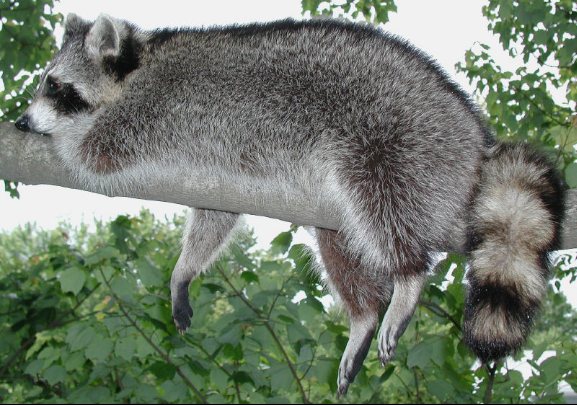
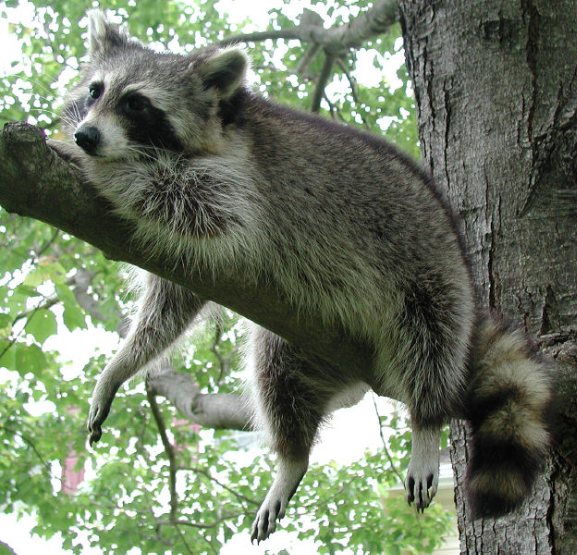
THIS MOUNT WILL EVEN KEEP THE NEIGHBOR KIDS IN LINE!
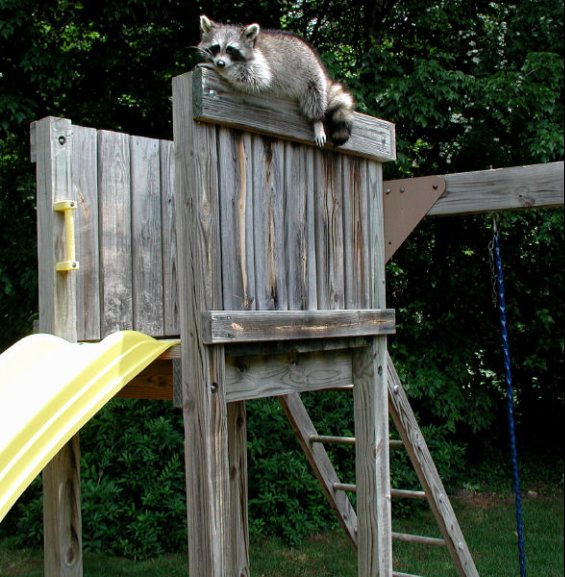
AND IT GIVES YOU SOMETHING TO HUNT AROUND THE HOLIDAYS

PREFERRED FIREARMS
When coon hunting, most shots are relatively close and if you want to save pelts, a small caliber rifle, pistol or shotgun would be the gun of choice. Regarding shotgun, I like the following setup and LOVE the red dot for nighttime coon hunting...
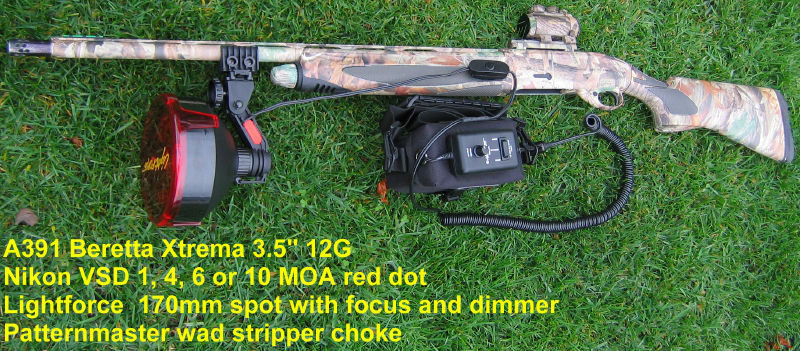
Nighttime Shotgun setup by Pete Hauer
They are solid, dense animals that will usually take up to about a hornet regarding rifle caliber. I personally like a 35g V-Max pushed out of a Hornet at 3100FPS. If head on chest shots are taken, there is often no exit. The 22 mag also makes a fine coon rifle and is easy on pelts. I prefer either the 34g Winchester HP Supremes (Similar to the Winchester Varmint load) or the Federal Sierra 30g HPs.
Regarding shotguns, I like Hevishot B loads for decent range without damage to pelts.
The effectiveness of the HMR and HM2 is still out for judgement when it comes to coons. I think the .17 HMR (Hornady Magnum Rimfire) has it's place, but very precise placement is going to be absolutely necessary. I have talked to hunters who swear by it and others who swear at it when it comes to tough coons. I think placement of this round is critical. I recently picked up a 17 Rem in Tikka in 595 Continental Varminter and am curious to see if it will be too rough on a coon pelt. Time will tell. Regarding scope choice I do a lot of night time hunting and I love the Nikon Monarch 5.5-16.5x44mm. It is incredibly bright and clear.
SAFETY AND STATE LAWS
As with all types of calling, the hunter MUST refer to game laws for his location. Some states do not allow night time calling, some restrict the type of light that can be used or even the type of firearm. That may even change from county to county and it is the hunter's responsibility to make sure they hunt within the law. Many states will also regulate whether you can shoot a coon in a den tree. Calling around barns or shooting a coon in a tree brings about many questions regarding safety. Appropriate types of firearms must be used and your target animal MUST always be properly identified BEFORE a weapon is used. I have seen many owls eyes reflect in similar fashion to a coon and great care must be taken to avoid shooting a non target animal.
It should also be noted that coons can and do carry multiple diseases and parasites that can be transmitted to humans. Sylvatic plague and rabies are such examples. They also carry a formidable set of choppers so be careful handling them and make sure they are dead before moving them!
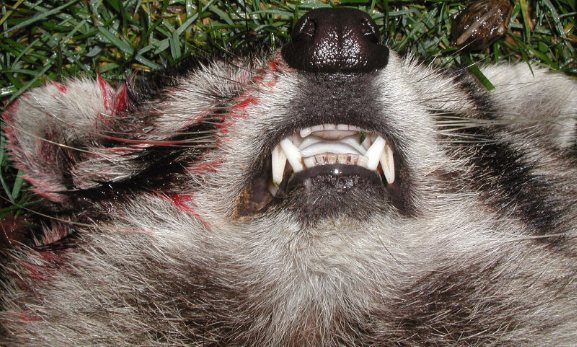
Raccoon Teeth
Coons are also prone to distemper and high population levels are often followed by severe population crashes. If you find multiple dead coon in wet areas, you may be seeing a distemper outbreak that has been very common lately. When skinning or handling coons, hunters should wear appropriate gloves to protect themselves from disease transmission. Personally, I have also had preventative rabies vaccine and have my titer checked every 2 years. I do this mostly because I handle a fair number of coons and fox on a yearly basis.
THANKS TO FOXPRO FOR MAKING A GREAT CALLER
I would like to take a minute to thank Mike and John Dillon of FOXPRO for making such great callers. As a field tester I want to reiterate there is no such thing as a "Golden Bullet" when it comes to callers. You still have to do your part as a hunter to have a successful hunt. Watch the wind, scout for animals to maximize your chances, set up properly, and when it comes time, FOXPRO callers will do their part to perfection. It is the one piece of equipment I can rely on EVERY TIME. In regards to coon calling, FOXPRO callers have greatly increased the success of my coon hunts. Sadly, it is a form of predator hunting many guys bypass because they just don't know how to get started. Coon populations have increased around the country and I hope this helps new coon hunters get started. Now get out there and hunt the night shift for coons!
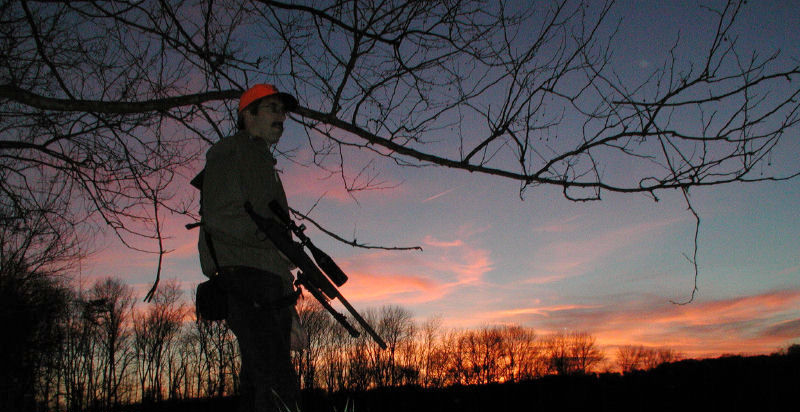
Pete Hauer
FOXPRO welcomes thoughtful comments from our visitors. All comments are moderated prior to publication. Please review our Comments Policy.